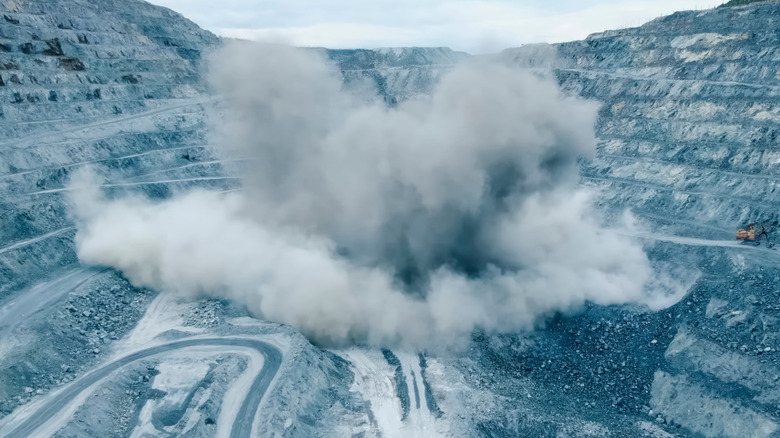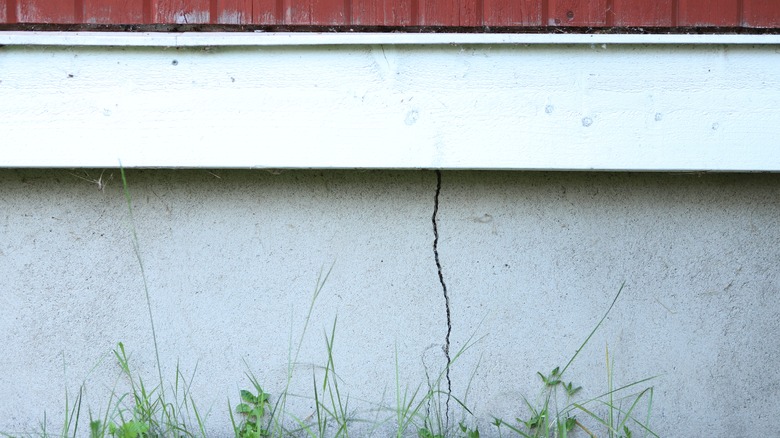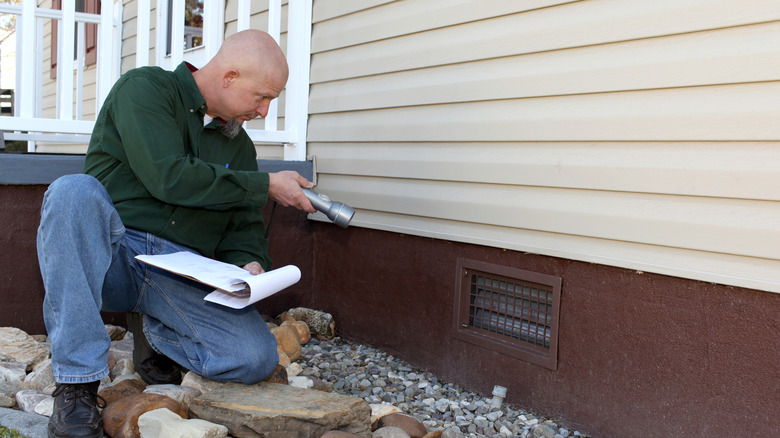Can Nearby Construction Blasting Cause Damage To Your Home? Here's What We Know
We spend years, sometimes decades, building a new house. From the moment the first brick is laid to the day sunlight floods through windows, it's a fulfillment of something long imagined. And soon, it becomes a space that shelters the people you love. So, when someone else's project, say, a massive construction site down the road, starts shaking that sense of safety, you can't help but tense up. Unfortunately, nearby blasting during construction can do more harm than meets the eye. You may, for instance, notice shifts in your foundation. These shifts can lead to cracks across walls. And oftentimes, doors and windows can stop aligning the way they used to.
So, why does blasting happen in the first place? The goal is to break up rock or hard earth through controlled explosives. Builders do this to dig deep foundations or prepare tough sites for development. Through this process, they end up saving weeks and months of manual excavation. However, when done carelessly, it can send vibrations that find their way into your living room, and that's when the consequences are hard to ignore.
How construction blasting impacts homes
When a blast goes off nearby, it launches a shock wave through the ground. You might hear a low boom, feel the windows quiver, or sense the floor vibrate beneath your feet. Research shows that underground or subsurface blasting can produce vibrations strong enough to cause damage, even when it seems distant. To prevent this, safety codes rely on something called Peak Particle Velocity (PPV) — basically, how fast the ground moves during a blast.
The U.S. Bureau of Mines explains that ground vibrations between 0.5 to 2.0 inches per second can cause minor cracks in residential homes. And the real trouble comes from low-frequency vibrations that travel farther and hit harder. Homes made with modern drywall usually hold up better. But older houses with plastered walls are more likely to crack. Some studies note that long-lasting vibrations from heavy machinery are even trickier. They tend to behave differently and can quietly stress a home over time. Researchers also mention that PPV doesn't tell the full story. That's because the extent of damage depends on your home's foundation and design. Even soil type could be a factor. Put simply, two houses side by side might not shake the same way.
What you can do as a homeowner
If there's blasting happening near your neighborhood, get ahead of it. Ideally, schedule a structural home inspection. A professional can spot early signs of stress that you might miss, which can save you from a wallet-draining nightmare later.
If, however, you suspect blasting has already caused damage, documentation will be your best friend. Make sure you take clear photos and videos. Also, note the dates you first noticed changes, and, if possible, record when blasting occurred nearby. Keep everything organized. Because when the time to deal with construction companies or insurers comes, they'll want proof. These claims can get messy fast, and some companies may try to dodge responsibility unless you can connect the dots with solid evidence. In serious cases, it might even be worth consulting an attorney who's handled property damage claims before.
Keep in mind that your homeowners' insurance policy may not cover vibration-related damage. They often tuck it under "earth movement," which sounds like an earthquake issue, but sometimes gets stretched to include man-made vibrations, too. If your insurer refuses to open a claim or flat-out denies it, don't take it lying down. Every state has its own department of insurance that investigates unfair claim denials. Reach out and speak up, because that's often the only way real change begins.


